The Doors (film)
6.2 /10 1 Votes
54% Rotten Tomatoes Duration Language English | 7.2/10 IMDb 62% Metacritic Genre Biography, Drama, Music Country United States | |||||||||||||||||||||||||||||||||
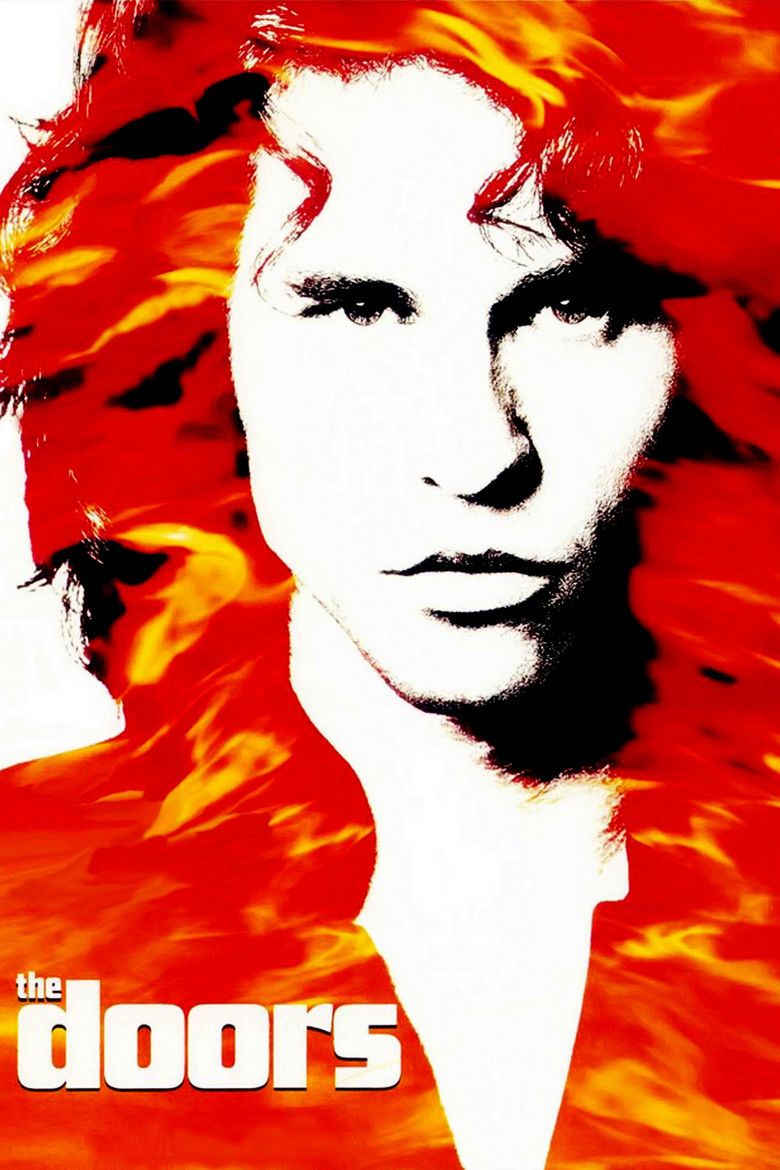 | ||||||||||||||||||||||||||||||||||
Release date March 1, 1991 (1991-03-01) Screenplay Oliver Stone, Randall Jahnson Songs The Movie Cast (Jim Morrison), (Pamela Courson), (Ray Manzarek), (Robby Krieger), (John Densmore), (Paul Rothchild) Similar movies Blackhat , Salt , Independence Day , Dreamgirls , You, the Living , School of Rock Tagline The Ultimate Story of Sex, Drugs & Rock 'N' Roll | ||||||||||||||||||||||||||||||||||
The Doors is a 1991 American biographical film about the 1960–70s rock band of the same name which emphasizes the life of its lead singer, Jim Morrison. It was directed by Oliver Stone, and stars Val Kilmer as Morrison and Meg Ryan as Pamela Courson (Morrison's companion). The film features Kyle MacLachlan as Ray Manzarek, Frank Whaley as Robby Krieger, Kevin Dillon as John Densmore, and Kathleen Quinlan as Patricia Kennealy.
Contents
- the doors movie trailer
- Plot
- Cast
- Development
- Screenplay
- Casting
- Principal photography
- Soundtrack
- Historical accuracy
- Reception
- References

The film portrays Morrison as the larger-than-life icon of 1960s rock and roll, counterculture, and the drug-using free love hippie lifestyle. But the depiction goes beyond the iconic: his alcoholism, interest in hallucinogenic drugs as entheogens, and, particularly, his growing obsession with death are threads which weave in and out of the film. The film was not well received by his band mates, close friends, and family, due to its depiction of Morrison.
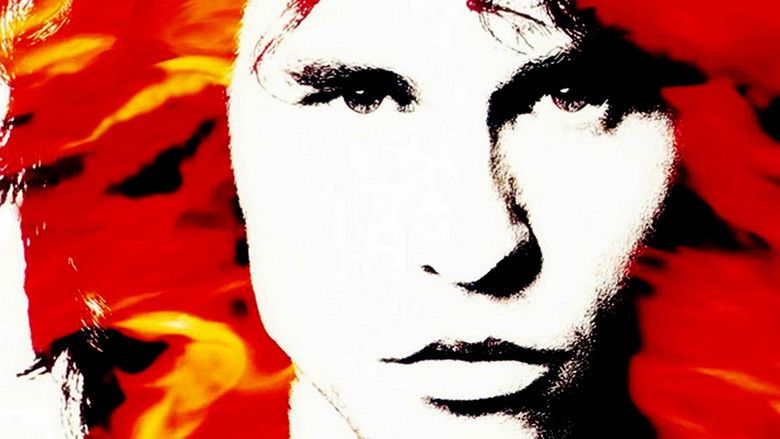
the doors movie trailer
Plot
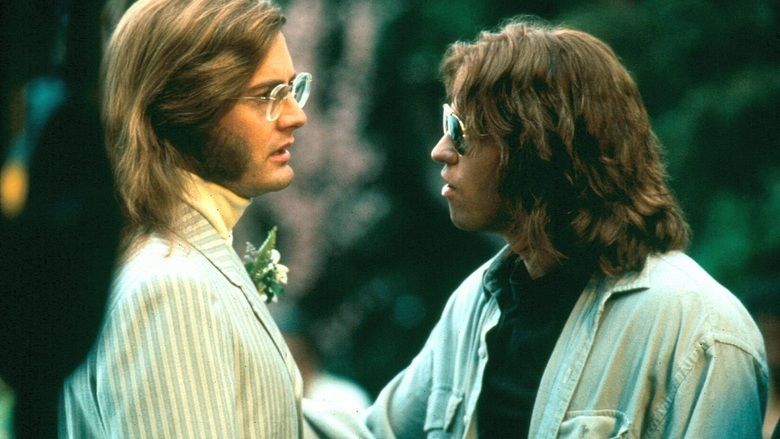
The film opens during the recording of Jim's An American Prayer and quickly moves to a childhood memory of his family driving along a desert highway in 1949, where a young Jim sees an elderly Native American dying by the roadside. In 1965, Jim arrives in California and is assimilated into the Venice Beach culture. During his tenure studying at UCLA, he meets his future girlfriend Pamela Courson, and meets Ray Manzarek for the first time, as well as Robby Krieger and John Densmore; who would found The Doors.
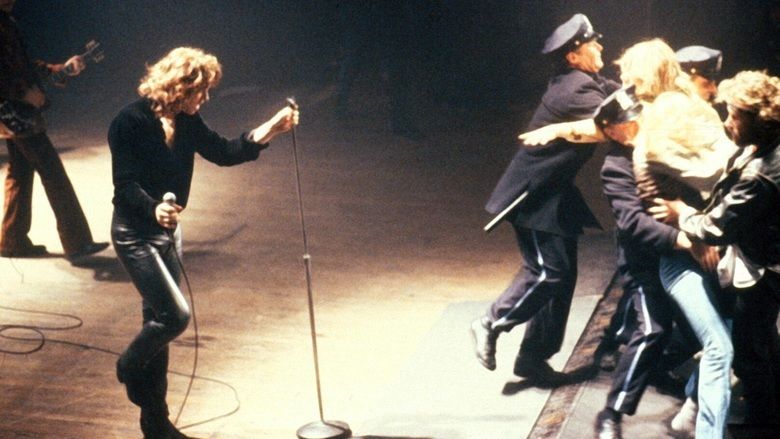
Jim convinces his bandmates to travel to Death Valley and experience the effects of psychedelic drugs. Returning to Los Angeles, they play several shows at the famous nightclub Whisky a Go Go and develop a rabid fan base. Jim's onstage antics and occasionally improvised lyrics raise the ire of club owners; however, the band's popularity continues to expand.
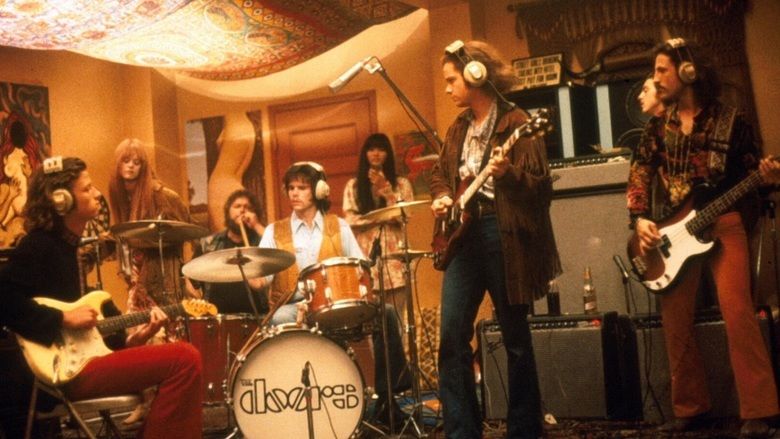
As the Doors become very successful, Jim becomes increasingly infatuated with his own image as "The Lizard King" and degenerates into alcoholism and drugs. Jim meets Patricia Kennealy, a rock journalist involved in witchcraft, and participates with her in mystical ceremonies. He joins her in a handfasting ceremony. An elder spirit watches these events.
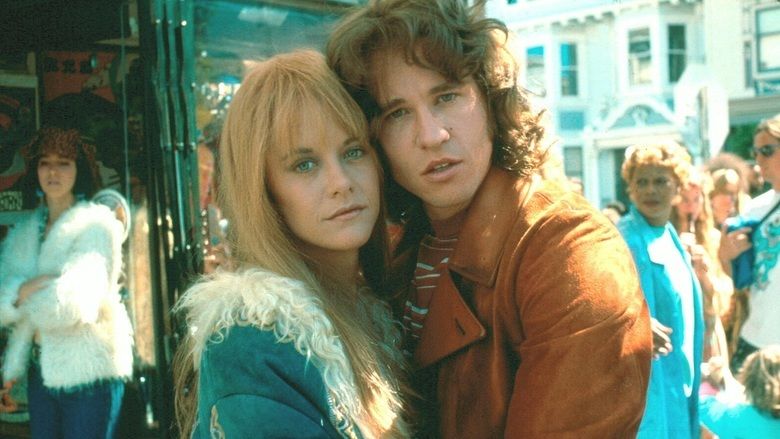
The rest of the band grows weary of Jim's missed recording sessions and absences at concerts. Jim arrives late to a Miami, Florida concert, becoming increasingly confrontational towards the audience and allegedly exposing himself onstage. The incident is a low point for the band, resulting in criminal charges against Jim, cancellations of shows, breakdowns in Jim's personal relationships, and resentment from the other band members.
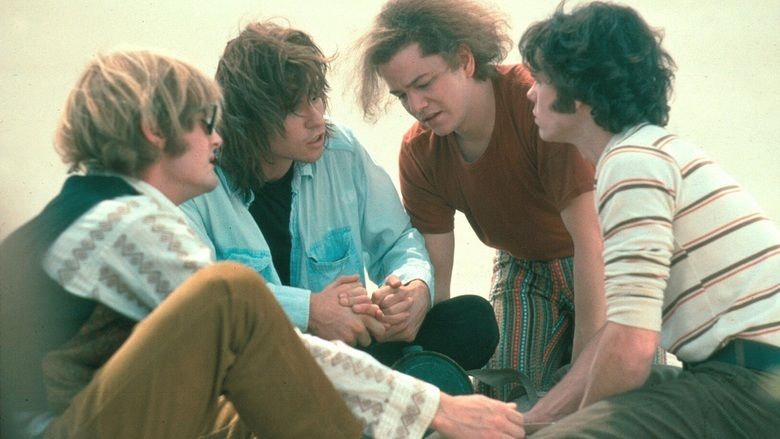
In 1970, following a lengthy trial, Jim is found guilty of indecent exposure and ordered to serve time in prison. However, he is allowed to remain free on bail pending the results of an appeal. Patricia tells Jim that she is pregnant with his child, but Jim convinces her to have an abortion. Jim visits his fellow bandmates for the last time, attending a party thrown by Ray where he wishes the band luck in their future endeavours and gives each of them a copy of An American Prayer. As Jim plays in the front garden with the children, he sees that one of the children is his childhood self. Jim comments: "This is the strangest life I've ever known."

In 1971, Pam finds Jim dead in a bathtub in Paris, France, at the age of 27. The final scenes of the film before the credits roll are of Jim's gravesite in Père Lachaise Cemetery in Paris while "A Feast of Friends" plays in the background. Just before the credits, the screen whites out and text appears saying "Jim Morrison is said to have died of heart failure. He was 27. Pam joined him three years later."
During the credits, the band is shown recording the song "L.A. Woman" in the studio.
Cast
Development
Film directors Brian De Palma, Martin Scorsese, and William Friedkin flirted with making a Doors biopic over the years. In 1985, Columbia Pictures acquired the rights from the Doors and the Morrison estate to make a film. Producer Sasha Harari wanted filmmaker Oliver Stone to write the screenplay but never heard back from his agent. After two unsatisfactory scripts were produced, Imagine Films replaced Columbia. Harari contacted Stone again and the director met with the surviving band members. He told them he wanted to keep a particularly wild scene from one of the early drafts. The group was offended and exercised their right of approval over the director and rejected Stone. By 1989, Mario Kassar and Andrew Vajna, who owned Carolco Pictures, acquired the rights to the project and they wanted Stone to direct it. The Doors had seen Platoon and were impressed with what Stone had done. He agreed to make it after his next project, Evita. After spending years working on it and courting Madonna and Meryl Streep to play the lead role, the film fell apart over salary negotiations with Streep. Stone quickly moved over to The Doors and went into pre-production. Guitarist Robby Krieger had always opposed a Doors biopic until Stone signed on to direct. Historically, keyboardist Ray Manzarek had been the biggest advocate of immortalizing the band on film but opposed Stone's involvement. He was not happy with the direction that Stone was going to take with the film and refused to give his approval. According to actor Kyle MacLachlan, "I know that he and Oliver weren't speaking. I think it was hard for Ray, he being the keeper of the Doors myth for so long". According to Krieger, "when the Doors broke up Ray had his idea of how the band should be portrayed and John and I had ours". Manzarek claims that he was not asked to consult on the film and wanted it to be about all four band members equally rather than the focus being on Morrison. Stone claimed that he repeatedly tried to get Manzarek involved, but "all he did was rave and shout. He went on for three hours about his point of view ... I didn't want Ray to be dominant, but Ray thought he knew better than anybody else".
Screenplay
Stone first heard the Doors in 1967, when he was a 21-year-old soldier in Vietnam. Before filming started, Stone and his producers had to negotiate with the three surviving band members and the parents of Morrison and his girlfriend Pamela Courson, and the band's label Elektra Records. Morrison's parents would only allow themselves to be depicted in a dream-like flashback sequence at the beginning of the film. The Coursons wanted there to be no suggestion in any way that Pamela caused Morrison's death. Stone found the Coursons the most difficult to deal with because they wanted Pamela to be portrayed as "an angel". While researching the film, Stone read through transcripts of interviews with over 100 people. He then wrote his own script in the summer of 1989. Stone said, "The Doors script was always problematic. Even when we shot, but the music helped fuse it together". Stone picked the songs he wanted to use and then wrote "each piece of the movie as a mood to fit that song". The Coursons did not like his script and tried to slow the production down by refusing to allow any of Morrison's later poetry to be used in the film. (When Morrison died, Courson got the rights to his poetry and when she died, her parents got the rights.)
Casting
For nearly ten years prior to production, the project went through development hell after being considered by many studios and directors. Several actors including Tom Cruise, Johnny Depp, John Travolta, and Richard Gere were each considered for the role of Morrison when the project was still in development in the 1980s. Even Bono from U2 and Michael Hutchence of INXS expressed an interest in the role, however Stone offered the role to Ian Astbury of The Cult. He declined the role because he was not happy with the way Morrison was represented in the film. When Stone began talking about the project in 1986, he had Val Kilmer in mind to play Morrison after seeing him in the Ron Howard fantasy film Willow. Kilmer had the same kind of singing voice as Morrison and to convince Stone that he was right for the role, spent several thousand dollars of his own money and made his own eight-minute video, singing and looking like Morrison at various stages of his life. To prepare for the role, Kilmer lost weight and spent six months rehearsing Doors songs every day. The actor learned 50 songs, 15 of which are actually performed in the film. Kilmer also spent hundreds of hours with Paul Rothchild, who told him, "anecdotes, stories, tragic moments, humorous moments, how Jim thought, what were my interpretation of Jim's lyrics," the music producer said. Rothchild also took Kilmer into the studio and helped him in "some pronunciations, idiomatic things that Jim would do that made the song sound like Jim". Kilmer also met with Krieger and Densmore but Manzarek refused to talk to him. When the Doors heard Kilmer singing they could not tell whether the voice was Kilmer's or Morrison's.
Stone auditioned approximately 60 actresses for the role of Pamela Courson. The part required nudity and the script featured some wild sex scenes which generated a fair amount of controversy. Casting director Risa Bramon felt that Patricia Arquette auditioned very well and should have gotten the part. To prepare for the role, Meg Ryan talked to the Coursons and people that knew Pamela. Before doing the film, she was not familiar with Morrison and "liked a few songs" and said, "I had to reexamine all my beliefs about it [the 1960s] in order to do this movie". In doing research, she encountered several conflicting views of Pamela.
Krieger acted as a technical adviser on the film and this mainly involved showing his cinematic alter ego, Frank Whaley, where to put his fingers on the fretboard. Densmore also acted as a consultant on the film, tutoring Kevin Dillon who played him in the film.
Principal photography
With a budget set at $32 million, The Doors was filmed over 13 weeks predominantly in and around Los Angeles, California; Paris, France; New York City, New York and the Mojave Desert. Stone originally hired Paula Abdul to choreograph the film's concert scenes but she dropped out because she did not understand Morrison's on-stage actions and was not familiar with the time period. She recommended Bill and Jacqui Landrum. They watched hours of concert footage before working with Kilmer. The Landrums got him to do dance exercises to loosen up his upper body and jumping routines to develop his stamina. During the concert scenes, Kilmer did the actual singing and Stone used the Doors' master tapes without Morrison's lead vocals to avoid lip-synching. Kilmer's endurance was put to the test during the concert sequences which took several days to film. Stone said, "his voice would start to deteriorate after two or three takes. We had to take that into consideration". One sequence, filmed inside the Whisky a Go Go, was harder than others due to all the smoke and sweat - a result of the body heat and intense camera lights. For five days, Kilmer performed "The End" and, after the 24th take Stone got what he wanted, his actor was completely exhausted.
Controversy arose during filming when a memo linked to Kilmer circulated among cast and crew members listing rules of how the actor was to be treated for the duration of principal photography. These included people being forbidden to approach him on the set without good reason, not to address him by his own name while he was in character, and no one could "stare" at him on the set. An upset Stone contacted Kilmer's agent and the actor claimed it was all a huge misunderstanding and that the memo was for his own people and not the film crew.
Soundtrack
The film's soundtrack contains over two dozen of The Doors' songs; in the film, original recordings of the band are combined with vocal performances by Kilmer himself. In addition to the many themed Doors songs featured, two songs by The Velvet Underground are also heard throughout the film.
Historical accuracy
The film is based mostly on real people and actual events, but some parts are clearly Stone's vision and dramatization of those people and events. For example, when Morrison is asked to change the infamous lyric in "Light My Fire" for his appearance on The Ed Sullivan Show, he is depicted as blatantly ignoring their request. The film depicts a defiant Morrison shouting the word "higher! Yeah!" into the TV camera, while in fact during the broadcast Morrison had simply sung the vocal with the same emphasis as on the record. Morrison later said the inclusion of "higher" in the live version was an accident, that he meant to change the lyric but was so nervous about performing on live television that he simply forgot to change it. Ray Manzarek said that The Doors pretended to agree to the change of words, and deliberately played the song as they always had, though, without any added emphasis on the offending word.
Morrison is also depicted locking Courson in a closet and setting it on fire, which never happened. In his book Light My Fire, Manzarek is frank about Morrison's tendency to go into senseless rages, but participants in the film agree Stone took many liberties in fabricating events.
Dialogue that took place between Kennealy and Morrison is reassigned to Courson, and Courson is depicted as saying hostile things to Kennealy, when by all reports their interactions were polite. Densmore is also portrayed as hating Morrison as Morrison's personal and drug problems begin to dominate his behavior. In truth, as Densmore writes in Riders on the Storm, he never directly confronted Morrison about his behavior.
Krieger, Densmore, and Kennealy are all credited as technical advisors for the film; however, they have all commented that although they may have given advice, Stone often chose to ignore it in favor of his own vision of the story. The settings for the film, particularly the concert sequences, are depicted in mostly chronological order, although the crowd scenes contain many blatant exaggerations, such as portrayals of nudity, bonfires, and group revelries that did not occur.
The surviving Doors members were all to one degree or another unhappy with the final product, and were said to have heavily criticized Stone's portrayal of Morrison as an "out of control sociopath". In a 1991 interview with Gary James, Manzarek criticized Stone for exaggerating Morrison's alcohol consumption in the movie, saying, "Jim with a bottle all the time. It was ridiculous . . . It was not about Jim Morrison. It was about Jimbo Morrison, the drunk. God, where was the sensitive poet and the funny guy? The guy I knew was not on that screen." In the afterword of his book Riders on the Storm, Densmore says that the movie is based on "the myth of Jim Morrison". In the same place, he criticizes the film for portraying Morrison's ideas as "muddled through the haze of the drink [alcohol]". In a 1994 interview, Krieger said that the film doesn't give the viewer "any kind of understanding of what made Jim Morrison tick." Krieger also commented about the film in the same interview: "They left a lot of stuff out. Some of it was overblown, but a lot of the stuff was very well done, I thought."
In the book The Doors, Manzarek says, "That Oliver Stone thing did real damage to the guy I knew: Jim Morrison, the poet." In this book, Densmore says of the movie, "A third of it's fiction." In the same volume, Krieger joins Manzarek and Densmore in describing the movie as inaccurate, but also says, referring to the film's inaccuracy, "It could have been a lot worse."
As the credits point out and as Stone emphasizes on his DVD commentary, some characters, names, and incidents in the film are fictitious or amalgamations of real people. Stone states in particular in the 1997 documentary The Road of Excess that Quinlan's character, Patricia Kennealy, is a composite, and in retrospect should have been given a fictitious name. Kennealy in particular was hurt by her portrayal in the film. Ryan's character, Pam Courson, involves liberties of a different sort. The former Doors do not think the movie depiction of her is very accurate, as their book The Doors describes the version of Courson in the movie as "a cartoon of a girlfriend". Courson's parents had inherited Morrison's poems when their daughter died, and Stone had to agree to restrictions about his portrayal of her in exchange for the rights to use the poetry. In particular, Stone agreed to avoid any suggestion that Courson may have been responsible for Morrison's death. However, Alain Ronay and Courson herself had both said that she was responsible. In Riders on the Storm, Densmore says Courson said she felt terribly guilty because she had obtained drugs that she believed had either caused or contributed to Morrison's death.
Manzarek did not approve of how Morrison was portrayed by Stone. In Manzarek's biography of the Doors, Light My Fire he often criticizes Stone and also includes myriad details that discredit Stone's account of Morrison. For example, in Stone's "re-creation" of Morrison's student film at UCLA, he has Morrison watching a D-Day sequence on TV and shouting profanities in German, with a near-nude German exchange student dancing on top of the TV sporting a swastika armband. According to Manzarek, the only similarity between Stone's version and Morrison's was that the girl in question was indeed German.
Reception
The film received mixed reviews from critics. According to Q magazine, "few people emerged from seeing the film having raised their opinions of that band and especially its singer Jim Morrison". The problem, as critic Keith Cameron has put it, wasn't so much that "Stone dwelled upon Morrison the inebriate, the philanderer, or the pretentious Lizard King... No, blame cliched Hollywood devices for sucking the wonder from the pioneering band: actors with fake hair saying silly things..." and "a self-important director's turgid attempts to make grand statements about America". "So...the movie was pretty good I guess," said Leonard Maltin.
On Rotten Tomatoes, the film has a 54% approval rating, based on 59 reviews, with an average rating of 6/10. The site's consensus states: "Val Kilmer delivers a powerhouse performance as one of rock's most incendiary figures, but unfortunately, Oliver Stone is unable to shed much light on the circus surrounding the star." Metacritic reports a 62 out of 100 rating, based on 19 critics, indicating "generally favorable reviews". Rolling Stone gave the film four out of four stars. The film was entered into the 17th Moscow International Film Festival.
References
The Doors (film) WikipediaThe Doors (film) IMDbThe Doors (film) Rotten TomatoesThe Doors (film) MetacriticThe Doors (film) themoviedb.org
